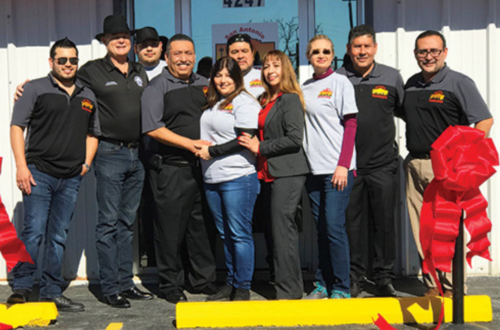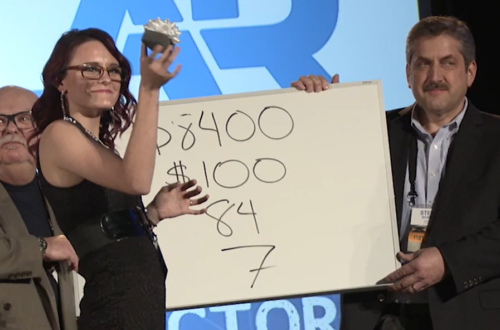
Automotive Education Advances to Meet New Demands
Published in AASP-MN News – Thomas Greco Publishing
Last month, AASP-MN News shared how two schools’ automotive technology programs are thinking outside the box to address the challenges they face in providing students with the tools and knowledge they need to become successful shop employees after graduation, but with today’s technology advancing faster all the time, several enlightened educators have seen the opportunity to take things a step further by creating new initiatives that specifically target some of the industry’s changing demands.
 These schools have taken the initiative to offer unique courses that address shops’ developing needs. Two years ago, Minnesota State Community and Technical College (Moorhead) received a $349,652 grant from the National Science Foundation to implement a program to provide automotive technology students with training on electric vehicles (EVs). “Only three percent of technicians are trained to work on these vehicles, yet the market is growing rapidly,” instructor Shannon Mohn indicated in 2022 when the school announced the grant.
These schools have taken the initiative to offer unique courses that address shops’ developing needs. Two years ago, Minnesota State Community and Technical College (Moorhead) received a $349,652 grant from the National Science Foundation to implement a program to provide automotive technology students with training on electric vehicles (EVs). “Only three percent of technicians are trained to work on these vehicles, yet the market is growing rapidly,” instructor Shannon Mohn indicated in 2022 when the school announced the grant.
“The project will have the ability to impact the automotive industry and college automotive technology programs on a local, regional and national level. The curriculum and resulting e-textbook and lab materials we develop will be shared with multiple National Science Foundation centers around the country, allowing any automotive technology program to use them.”
Minnesota State’s course offering now includes three courses on this subject matter – Advanced Automotive Electrical Systems, Hybrid Vehicle Technologies and Electric Platform Technologies – which allows students to obtain knowledge and demonstrate their abilities in this rapidly growing division of the automotive repair world. The trend is slowly catching on. Earlier this year, Ridgewater College (Willmar) began offering a one-credit course on maintenance for EVs and hybrids. More recently, Saint Paul College (Saint Paul) developed a cutting-edge training lab with the intention of debuting its “Intro to EV/Hybrid” class in 2025.
Diagnostics represents another subset of the industry that is developing at unprecedented rates, which presents training challenges for shops and schools alike. Anoka Technical College (Anoka) seeks to address that shortcoming with the addition of the first advanced diagnostic program in Minnesota. In addition to its traditional two-year program that equips students with the basic skills required to get started in the automotive industry, the school offers a one-year program consisting of two semesters: Automotive Electronic Diagnostic Specialist, which is open to up to 14 recent graduates of a two-year automotive program as well as relatively new technicians working in the field.
“Our program goal is to take a two-year graduate to the next level by focusing on the diagnosis of electronic systems and circuits, covering a wide range of systems on ICE, hybrid and electric vehicles,” explains program instructor David McFarland. “The one-year diagnostic program was designed to answer the following question that we asked our advisory board: ‘Are you happy with automotive technical college’s graduates?’ The answer is mostly no.
“The word ‘green’ is used a lot,” he continues. “A two-year automotive technical college will provide a dealership with someone who possesses a lot of skills but often lacks the experience and confidence to be self-starters. On average, it takes a recent graduate five to eight years to become a main-line technician, someone who can handle anything that comes in the door. Sometimes, a technician won’t see a check engine light for a month. The Automotive Electronic Diagnostic Specialist program is designed to shorten that timeframe into two semesters (nine months). Within those semesters, the student will learn to diagnose vehicle concerns by building on those skills learned in a two-year program, thereby giving the industry a go-to technician right out of school.”
“We receive donations from the public, which we use and are very grateful for, but they don’t fill the need because most of those vehicles are used up,” contributes David Holmquist, the automotive program’s other instructor. Providing students with mentorship opportunities is another challenge. “Internships help the students gain valuable experience and provide employers with a means to mentor them. Part of the contract with the employers is to give the students the opportunity to work in the area we just covered at school; however, far too often, they are left in the lube bay. Many of us older technicians had the benefit of one or two good mentors, and that support makes a huge difference.”
Anoka Tech helps students find job placement after graduation, but students often report concerns when it comes to pay, “whether it’s being dissatisfied with their hourly wage because they ‘can make more working at McDonald’s’ or simply being nervous about moving to a flat-rate position,” Holmquist observes. “Our industry doesn’t always do a very good job of paying our entry-level techs, and we still have the attitude that entry-level technicians need to pay their dues.
“The most disappointing aspect of this topic is that many of our graduates don’t last in the industry for more than five years,” Holmquist adds. “Sadly, some of our top students have left the automotive industry for these very reasons. In some cases, they are disparaged for not being tough enough for the auto industry. I believe we still have work to do as far as changing the culture in the industry, though this varies from shop to shop based on management and personnel.”
These schools have taken the initiative to go beyond thinking outside the box to break free of the barriers that previously prevented automotive technology educators from producing high-quality entry-level technicians for shops to hire, but once those students graduate, they leave the capable hands of their instructors and wind up in workplaces that may or may not be able to retain them.
The instructors are doing their part, but now it’s YOUR turn – are you ready to think outside the box and evaluate your shop culture to ensure you’re offering the type of environment that will retain the next generation of technicians? Stay tuned to an upcoming edition of AASP-MN News for some suggestions on improving your shop’s culture!




